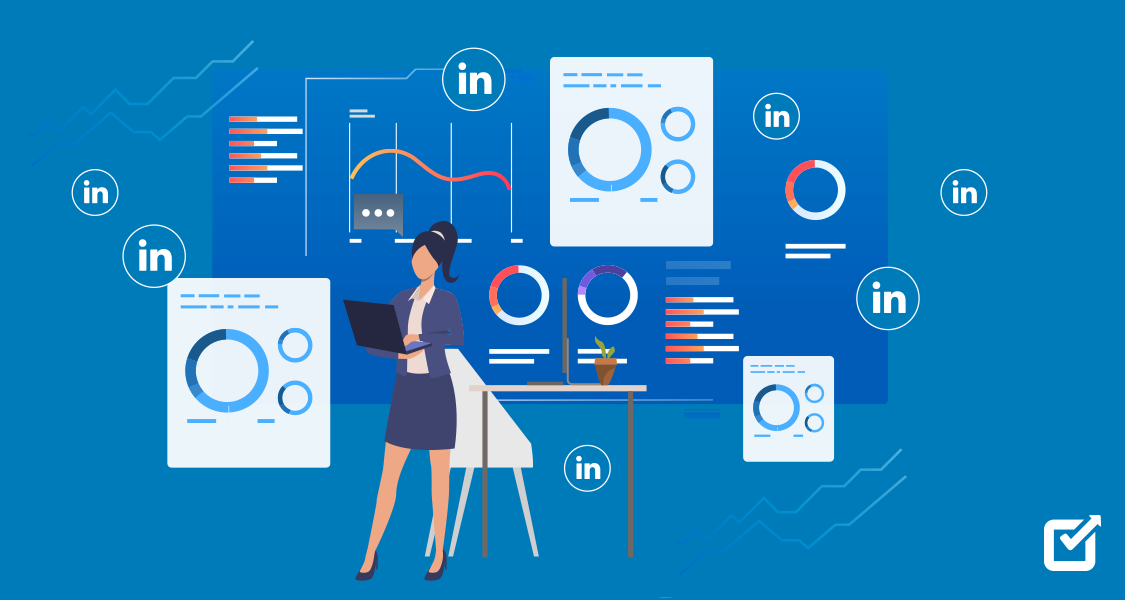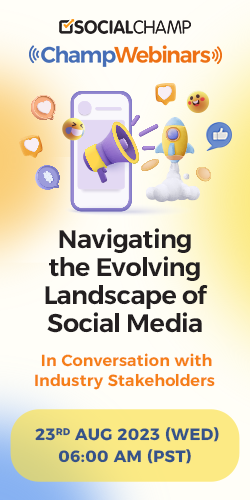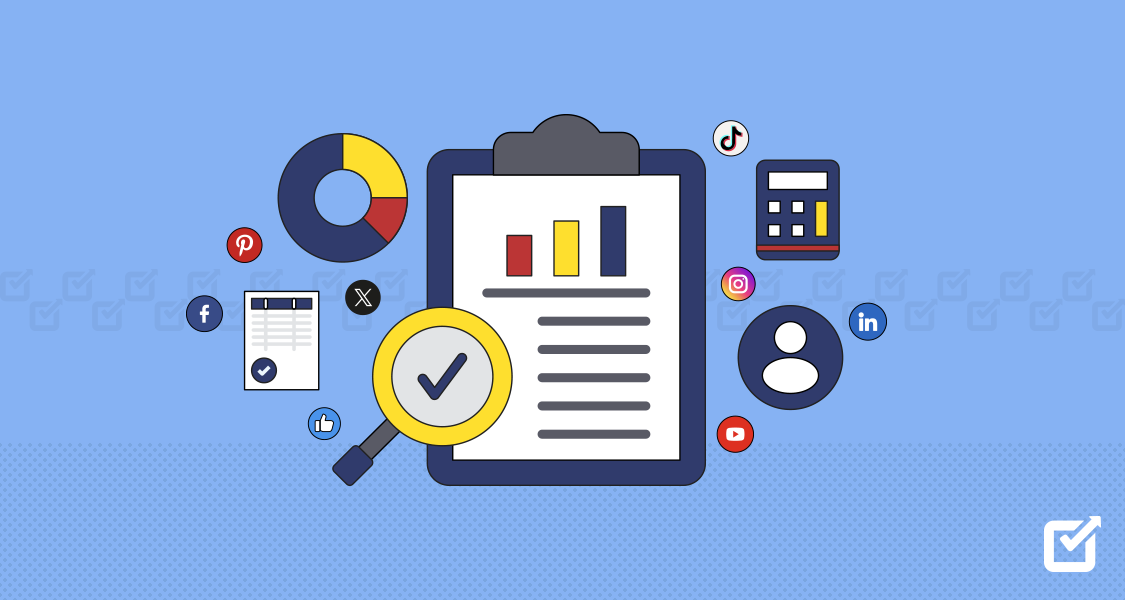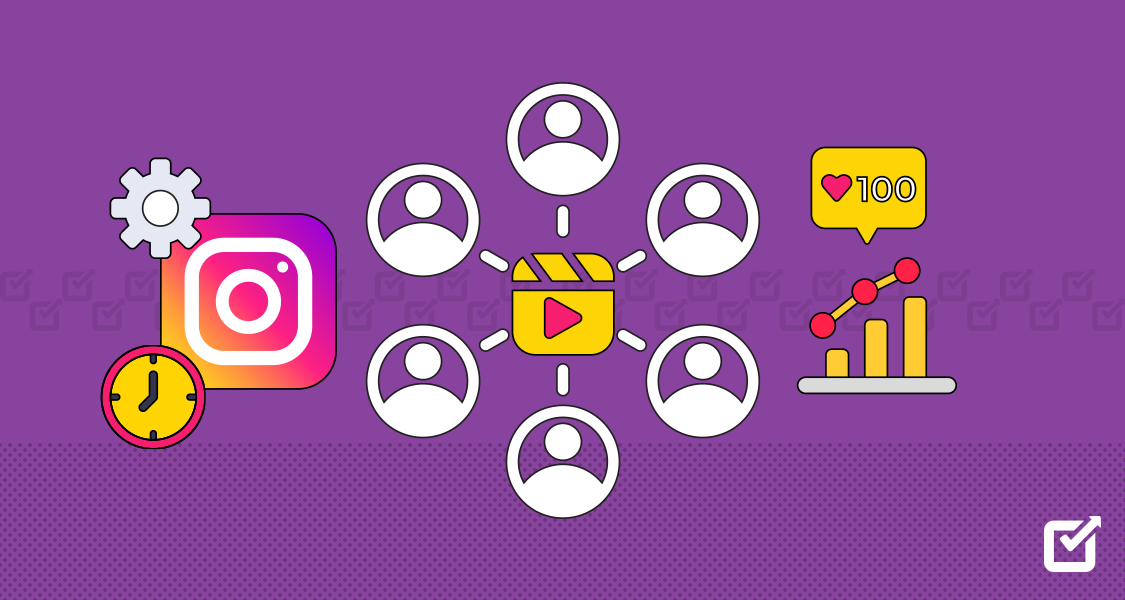If you are a part of an in-house marketing team or work in an agency, your life revolves around tracking and monitoring analytics. Chances are that you take a side of numbers with all meals that you consume during the day, and if you are one of the lucky ones, then during the night as well.
Considering that each marketing team has goals connected with the sales team, this honestly does not come off as a surprise. Along with all other social media networks, like Facebook & Instagram, it is essential to track LinkedIn. Not only is it the BEST platform for B2B marketers, but it can also gather quite a whole lot of engagement.
It is best to track analytics using the important LinkedIn metrics to help you move towards your goals. This way, you won’t be wasting any time going through and filtering fluff.
To learn more about LinkedIn metrics, let’s look at the analytics and other important aspects!
What Are LinkedIn Analytics & Why Are They Important?
LinkedIn Analytics is a group of LinkedIn metrics that measures the performance of your page or posts. Like other social media networks, LinkedIn also has a set of metrics that can help you keep an eye on how well your strategy is working out.
How to Track LinkedIn Analytics?
Tracking analytics can put you a step forward from your competitors and ensure that you always have best performing content on your page.
To measure your page’s analytics, you can use the platform’s native tool or a social media management tool, like Social Champ. If you use LinkedIn as your only social media source, using the native tool is the best choice. However, if you use a group of social media networks to market your business, then Social Champ should be your first choice. 
Track LinkedIn Analytics With Social Champ
Track & monitor Linkedin analytics along with other social media networks to bring about a better change in your ROI.
LinkedIn analytics is primarily divided into five main groups:
- Update Analytics offers the page admins opportunities to identify the trends among followers by tracking essential metrics of different components of the page.

- Follower Analytics provides an insight into the people who follow your page or show any interest in them.

- Visitor Analytics is mainly focused on the traffic to your page and can be sorted by different metrics.

- Employee Advocacy Analytics offers page admins the opportunity to identify and check out the employee and member engagement trends.
- Talent Brand Analytics measures how competitor followers interact with your post and page.
Featured Article: Why and How to Schedule LinkedIn Posts in 2022?
Why Is It Important to Track Analytics Based on LinkedIn Metrics?
So tracking analytics is essential, and we all know that, but why precisely should you track each social media according to platform-specific metrics, let’s find out:
- Tracking according to LinkedIn metrics gives a better and much more filtered list than you would get by just randomly monitoring numbers.
- Since social media is now bigger than ever, creating custom content strategies for each network is important. Network metrics will allow you to do just that.
- You can improve your content quality much more by tracking specific LinkedIn metrics than just following the trends generically.
- Tracking specific metrics allows you to provide quality to your LinkedIn followers by planning much more condensed campaigns.
- You can have a competitive edge over your competitors by tracking metrics, such as LinkedIn reactions, reach, and engagement rate.
12 LinkedIn Metrics to Track Regularly
Due to an influx of LinkedIn metrics available for tracking, it can get quite overwhelming to filter out those that would actually help your strategy.
Audience-Centric LinkedIn Metrics
LinkedIn has more than 800 million active users all over the world, which makes it pretty evident that it is crucial to track your followers on the platform. Luckily, the professional social media platform has a whole set of LinkedIn metrics that you can keep an eye on.
Audience-centric LinkedIn metrics are a set of metrics that capture how well your page as a whole is doing on the platform. It is super important to track these so that you can check if your page had an overall impact on your business goals or not.
Audience metrics always help you grow and identify the trends that your and your competitor’s followers enjoy. Tracking analytics and keeping an eye on LinkedIn insights, in turn, enables you to create better strategies, and in the long run, bring about a positive change in results. Here are a few LinkedIn metrics that directly relate to your audience on the platform and are important to track:
Demographic Data
Data demographics is one of the most critical and helpful LinkedIn metrics to track. It shows where the majority of your LinkedIn following is from, which eventually allows you to create more relevant and relatable content.
The metric also shows who is following your page, who is interacting with the posts, and how many people actually care about your ads on the platform. Now that we are on the topic of paid posts on LinkedIn let us tell you that LinkedIn also allows you to select a target audience like pretty much every other platform. And this is where demographics data come into use.
You can narrow down the audience to those who are actually interested and generate a better ROI on those campaigns.
You can find all this information on your demographics data tab:
- Job title
- Company industry
- Job seniority
- Job function
- Company size
- Location
- Country
- Company
Tracking demographics data can also help you find the right candidate for the job by putting your openings in front of them!
Unique Visitors
Tracking your unique visitors on LinkedIn is pretty much an obvious step that I am sure most marketers are already doing. LinkedIn unique visitors are the number of people who are visiting your profile for the first time.

This shows us how many new people are now interested in our business. It can also help you revamp your target person or your ideal customer. This is one of the key LinkedIn metrics that can indicate a change in your customer base.
Page Views
Page views show the number of people who skimmed through the page or visited the page. This count is inclusive of all views and it does not matter if the same person has viewed the page twice or more. Page views combined with other LinkedIn metrics can help you build a large following count and more engagements on your pages.
Visitors
Visitors are one of the key LinkedIn metrics that you should never ignore. It shows the number of people who are not following you but regularly visit your page to check out the posts and other activities.
This count also includes the number of new or unique visitors who have visited your page for the first time. This gives you a clear picture of how many people are interested in your business.
Pro tip: Make sure that your profile is fully loaded with all the essential information that a customer might require so that these visitors can convert into potential leads.
Followers Metrics
It is important to track your total number of followers and the change in them over time. It’s no surprise that your chances of appearing in the newsfeed increase if people follow your page. Therefore, to increase your post reach, it is important to try and increase followers actively.
Having a huge LinkedIn following also increases your credibility and builds brand awareness.
Follower metrics measure people who like to connect with your brand and stay up to date with news and recent happenings. Important data might include:
- Follower highlights: It shows how many people have followed your page beginning and the change in them in the form of percentage over the course of the past 30 days.
- Number of followers over time: This shows if your connection or follower count has increased or decreased over a set period and can be filtered by time ranges.
- Total follows: This shows how many followers your LinkedIn business profile currently has.
- Companies to track: Helps you stay updated with what your competitors are up to and what trends you should ideally follow.
Lastly, you can also track the demographic data of your LinkedIn following; this way, you would know more about them, and it would be easier for you to create and execute campaigns. According to location, job, company size, seniority, and industry, follower demographics break down the data.
Traffic Metrics
While tracking LinkedIn metrics, you should definitely not forget to monitor the page views according to the sources of all these views. Check if they are coming from mobile or desktop. LinkedIn analytics are always divided into desktop views and mobile views.
This is an amazing metric as it helps you optimize your future content in a much better way so that it can adjust to all screens and become more inclusive.
Engagement-Centric LinkedIn Metrics
Creating posts on LinkedIn is pretty much different than other social media platforms. Mainly because the audience and the purpose of them existing on the platform is different from others. LinkedIn is a professional platform where most people are only there to find new leads for their businesses or to create a work-centric profile.
However, if you would post relevant content that your target audience can resonate with, you are sure to gather engagement on most of the posts. Here are some engagement metrics that you should definitely track.
Impressions
The first and foremost social media metrics to track for all platforms is Impressions. This metric lets you track the total number of times your post or an update was visible for at least 300 milliseconds. This means that even if your post was half-visible to a logged-in viewer, it would count as an impression.

However, you can also track unique impressions to understand better how well your post is doing. Unique impressions would only count the number of times a new user would pass by the post.
Reactions, Comments, and Shares
Reactions, comments, and shares are some of the most important engagement-centric LinkedIn metrics to track and monitor weekly or monthly. Reactions are used to show a variety of emotional responses to your content. There are 6 reactions for posts on LinkedIn currently.

Shares are the count of the total number of people who share your posts. This helps to increase post reach and expand your follower base within the platform. And comments are well the most common form of engagement that people leave underneath your posts.
Engagement Rate
Engagement is one of the most common criteria to check how well your LinkedIn posts are doing. This is why the platform calculates your page’s LinkedIn engagement rate. Here is the formula for it:
(Clicks + Likes + Comments + Shares + Follows) / Impressions
The LinkedIn engagement rate helps you determine how you can change your content to make it more interesting for the audience and followers.
Reach
Impressions are based on how well your LinkedIn reach is. It shows how many people see your content on their newsfeed. The main difference between LinkedIn reach and impressions is that reach is based on unique views, and impressions count ALL the views.
It is indirectly related to how many people follow you on the platform or how many of those interact with your content. But it is definitely not limited to these two things. Multiple other factors weigh in when it comes to post-reach.
Clicks & Click-Through Rate
Clicks are one of the most important Linkedin metrics to check if your call to action is actually working. To put it simply, it shows if people are actually performing the action that you want them to instead of just moving past it.
On the platform, clicks are counted only on your post, company name, or company logo. It does not count other engagement activities. The click-through rate is a percentage of the total number of clicks divided by a post’s impressions.
CTR also gives you a better idea of how engaging or action-provoking your post is. A higher CTR also shows that your LinkedIn posts are actually helping in diverting traffic to your website.
It is also important to keep an eye on relevant conversations when you measure clicks and CTR. It shows if your post affects ROI or not.
Post Views
Post views are an overview of all the non-unique visitors or views on your posts, articles, job posting, or documents. This is one of the LinkedIn metrics that you should definitely track for a post-by-post breakdown on your page to see essential insights, such as reactions, comments, and shares.
5 Useful LinkedIn Analytics Tools to Add to Your Toolkit
Even though LinkedIn has its own LinkedIn Page Analytics feature, it certainly does not hurt to have some more tools on board to make the most of your analytics. LinkedIn page analytics is available for all page admins.
Here are our top 5 tools that professionals love to use to keep a track of LinkedIn insights:
Social Champ

Social Champ is a Linkedin scheduling tool that allows you to create and schedule posts and track and monitor analytics using platform-specific metrics. Social Champ has quite a huge analytics tab that can help you track everything from page views, careers page, and clicks to followers, comments, impressions, likes, shares, and more.
The social media management tool also creates beautiful graphs and charts that can be directly presented to an audience. You can further download PDF reports with custom titles and logos or export a CSV file with all necessary data.
Social Champ also allows you to filter data for all individual profiles. You can compare weekly or monthly reports and identify the best-performing posts within the analytics tab with the tool.
ReportGarden

ReportGarden is a digital marketing tool that has a LinkedIn analytics solution embedded in it. It is mainly used in agencies that rely on automated data. The dashboards are pretty easy to use and access and can also provide ad-related content.
Report garden can also help you with beginner-level budgeting and lead generation.
KlipFolio

Klipfolio is a powerful social media dashboard that can show you the numbers and interactions fetched by your LinkedIn page at the end of each month or week. Then you can compare the data with previous weeks.
It also helps you keep an eye on demographics and visualize data with charts & graphs. One of the best things about KlipFolio is that it is super professional.
Talkwalker

Talkwalker analyzes different media networks, including online, social, print, and radio, into one readable data format. Using the built-in templates, you can effectively share your social media performance with your team.
Or download reports by integrating Talkwalker into your CRM.
Brand 24

Brand24 is basically a LinkedIn Analytics tool to improve your social media presence by thorough competitor analysis. This tool makes it easier to keep a close eye on LinkedIn marketing campaigns. This tool also divides your content into positive and negative sentiments so that you can gauge your online reputation.
The best part, it is super easy to use!
Tracking LinkedIn Metrics With Social Champ – Conclusion

Easily manage your LinkedIn page along with other social media networks using Social Champ. It allows you to control all profiles using one unified dashboard with multiple features, such as Auto RSS, Bulk Upload, visual integrations, and more!





























